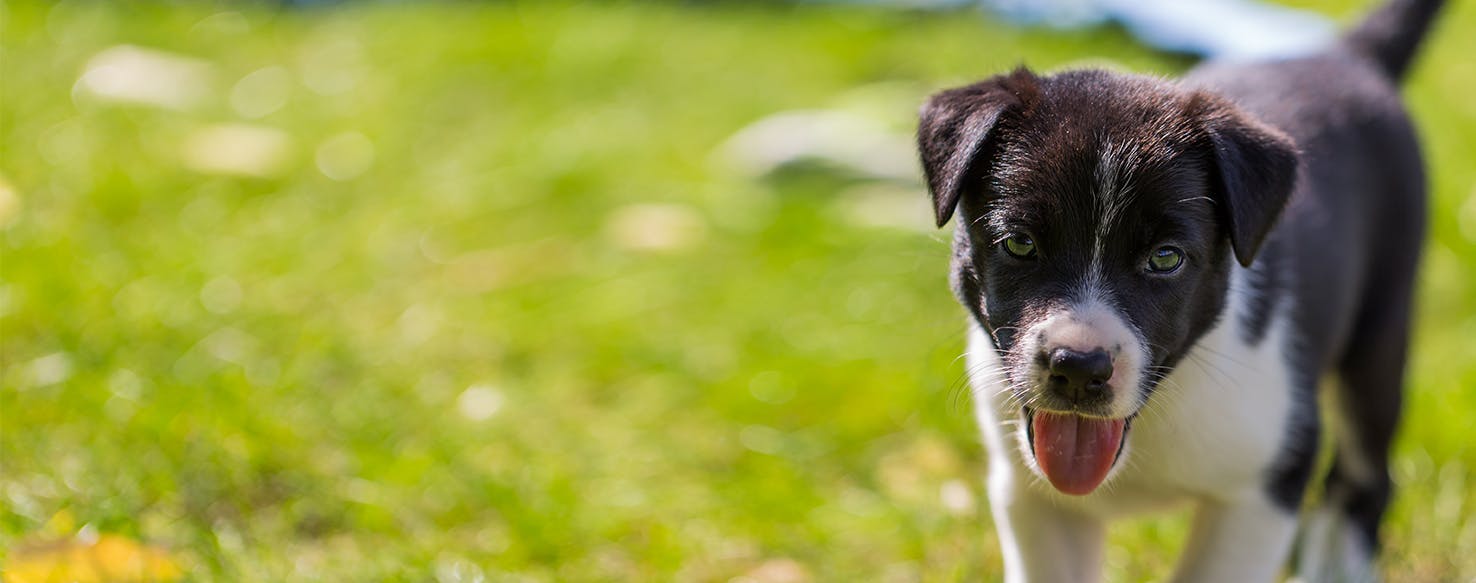- Home
- The Daily Wag!
- Behavior
- Why Do Dogs Come When You Whistle
Why Do Dogs Come When You Whistle

Common
Normal
Introduction
It happens every time: you are outside with your pup and you want him to come over, what do you do? You whistle for him to respond and the answer is always the same. Your dog is sitting right next to you once again. Sound familiar?
Did you know that responding to the whistle is closely associated with training and habit? Even though using a whistle is not a substitute for the verbal recall, it’s always a good idea to teach your dog the whistle command. So what is the best way to do it? Let’s find out more about why dogs come when you whistle and how you can train him to do just that.
The Root of the Behavior
No need to own a prized gun dog to get your pup to respond to your call. Furthermore, there is no magic whistle that will make your dog come over. It all comes down to biology and training. The human ear can hear sounds at frequencies up to 20 kilohertz, whereas the high end of a dog’s hearing ranges from 40 up to 60 kilohertz. This means that dogs can perceive sounds we normally can’t.
Which is why we call it the “silent” whistle. A hunting dog’s hearing is much more sensitive than that of deer and birds. This is the reason why whistles were commonly used for this type of breeds. The thing is, dog whistles work in the same way that any other mode of training does. Given the fact that dogs are consistently trained to respond in a certain way when they hear the whistle, they always commit to the same behavior and reaction.
There is no innate quality to a dog whistle that can impel a dog to come over. It is all a result of familiarity and training. So why do dogs come over when you whistle? Most dog whistles are within the 16,000 hertz to the 22,000 hertz range, which means they can easily attract the curiosity of your little pooch. At first, it’s just that… simple curiosity, afterward it’s all a matter of proper training.
If you want to train your dog to come to you at the sound of a whistle, you need to create a condition for your pup to repeat the behavior. This means you have to give him some sort of treat or reward so that he can expect that each time he hears you whistling. This is especially beneficial in the case of long-distance commands or if you don’t want to make too much noise while inside the house.
Need advice about your pet's health?
Get answers fast from a veterinary professional 24/7 in the Wag! App.
Get Vet ChatEncouraging the Behavior
Have you ever thought about using ultrasonic dog whistles as an alternative to your verbal call? First of all, you should know that ultrasonic whistles are generally used as a final stage of training with working dogs such as shepherding or hunting dogs. These whistles are extremely useful in recalling dogs over great distances, which makes them ideal for police dogs as well.
If you want your pup to be properly trained while indoors, you may use the whistle to avoid excess noise that can disturb neighbors, roommates, or family members. More so, a whistle will even stop your dog from barking at certain times. Then again, it is the training that does the trick and not the actual whistling instrument.
If you want your pup to react to your whistle in a positive manner, be sure not to use excessive whistling. If your dog is barking at something and you don’t know why maybe it is the whistle itself? It is better to find out why your dog is barking in the first place and use the whistle as a secondary or supplementary training technique rather than a priority. Train him properly and remember to always reward him lavishly for responding to the whistle.
Other Solutions and Considerations
Is your pup not responding to your call? As in many other cases, the problem… is not your dog. People misinterpret their lack of reaction as a behavioral issue when instead, it’s merely a lack of or an incomplete training process. If you don’t feel qualified enough to train in this matter, you can always hire a certified specialist to instruct and guide your little furry friend throughout all the phases of this method. The most important factor when it comes to a dog whistle of any kind is consistency. On the other hand, don’t think of whistles as an instant fix. Overuse of this method can lead to resistance, aggression, or apathy, so make sure you keep a healthy balance instead.
Conclusion
Have you ever tried to call your dog with a whistle? If so, then you know how important it is to stick to a consistent routine and not misappropriate the technique. Keeping your dog healthy and happy means you have the find the right balance in every aspect of your pup’s life. And that includes the whistle and the way he responds to it.
Written by a Amstaff lover Marieta Murg
Veterinary reviewed by:
Published: 02/21/2018, edited: 01/30/2020
More articles by Marieta Murg
